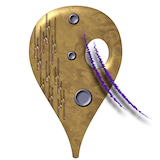Posts From 2009
(See recent posts or posts from: 2024 2023 2022 2021 2020 2019 2018 2017 2016 2015 2014 2013 2012 2011 2010 2009 2008)
- December 2009
-
(2009-12-26) Myst news: progress on Myst movie, iPhone Riven2 comments (latest 1 day later)
-
(2009-12-09) Get Lamp at PAX East4 comments (latest 3 days later)
-
(2009-12-03) IF activity at PAX East -- now with info!11 comments (latest 3 days later)
- November 2009
-
1 comment (5 days later)
-
(2009-11-16) The Prisoner: discussion post
-
(2009-11-16) IF breaking news
-
(2009-11-13) Games in, on, and around our culture
- October 2009
-
(2009-10-21) IF activity at PAX Boston!
-
(2009-10-11) Another Secret Project KLD image
-
(2009-10-08) System's Twilight turns fifteen22 comments (latest 2017-04-17)
-
(2009-10-07) Not IFComp adventure reviews
-
(2009-10-05) IFComp begins
- September 2009
-
(2009-09-22) The longest day of the year4 comments (latest 13 hours later)
-
(2009-09-20) Kory Heath's Blockhouse5 comments (latest 2013-12-11)
- July 2009
-
(2009-07-30) Capture the Flag with Stuff in Golden Gate Park
-
(2009-07-24) Tron sequel trailer
-
(2009-07-18) Secret Project KLD
-
(2009-07-18) On pixels1 comment (12-13)
-
(2009-07-05) Getting games wrong4 comments (latest 2 days later)
- June 2009
-
(2009-06-20) Validating my existence
-
(2009-06-12) Digital nonlinear CYOA comic2 comments (latest 17 hours later)
- May 2009
-
(2009-05-28) Video game movie fake trailers
-
(2009-05-15) Myst: the movie: the fan audition movie2 comments (latest 2011-05-09)
-
(2009-05-04) Rule-based programming in interactive fiction7 comments (latest 2 days later)
-
(2009-05-04) Myst hits iPhone App Store
- April 2009
-
(2009-04-09) Dave Arneson, 1947-2009
- March 2009
-
(2009-03-26) The grind house
-
(2009-03-25) Natural-language UI in the wild
- February 2009
-
(2009-02-20) This month in wacky little art games1 comment (3 hours later)
-
(2009-02-13) Interactive Fiction Writing Month1 comment (2 days later)
-
(2009-02-04) The Fool and his Money playable demo4 comments (latest 02-27)
-
(2009-02-04) How to destroy hope1 comment (02-13)
-
(2009-02-02) How to watch the football3 comments (latest 2011-09-16)
- January 2009
-
(2009-01-19) Werewolf for iPhone
-
(2009-01-15) Designing a casual MMO based on Zork4 comments (latest 4 days later)
-
(2009-01-06) IF Archive site redesign competition

